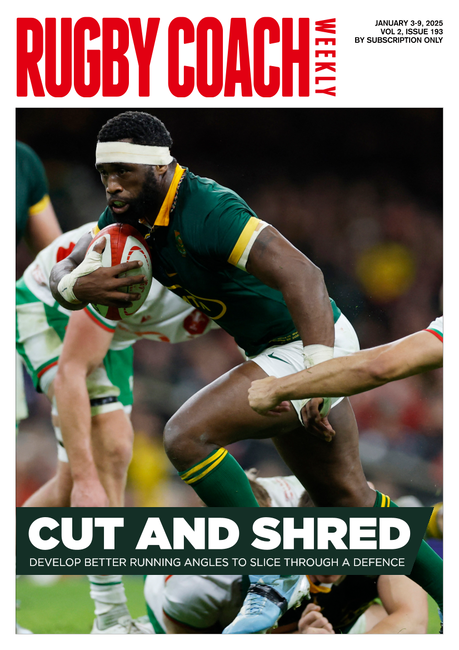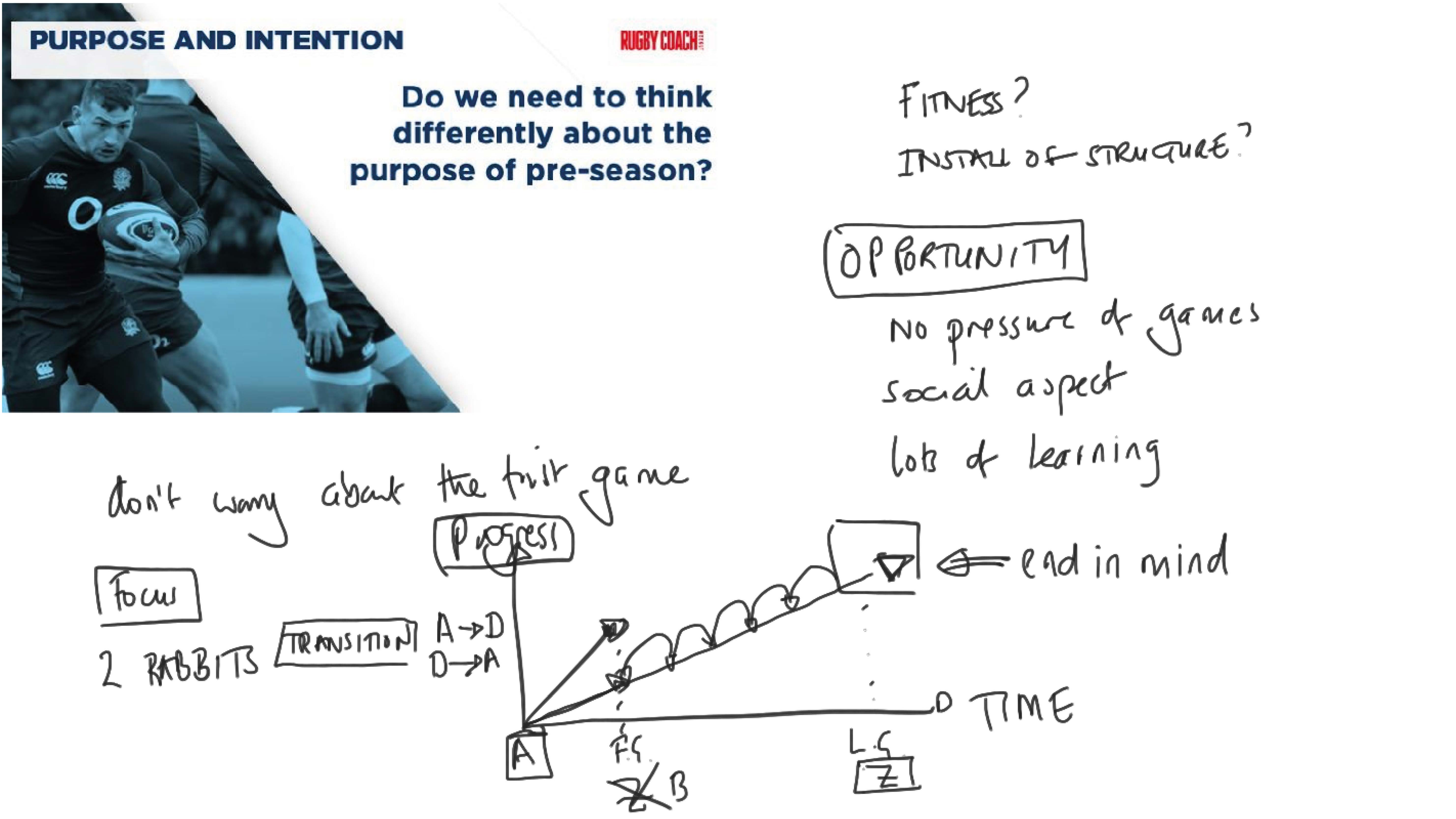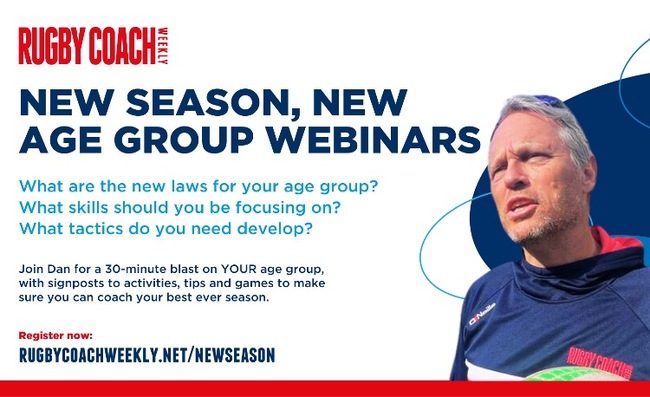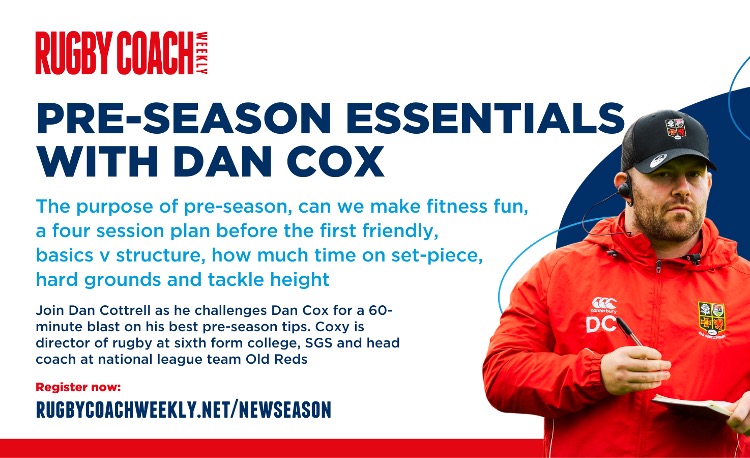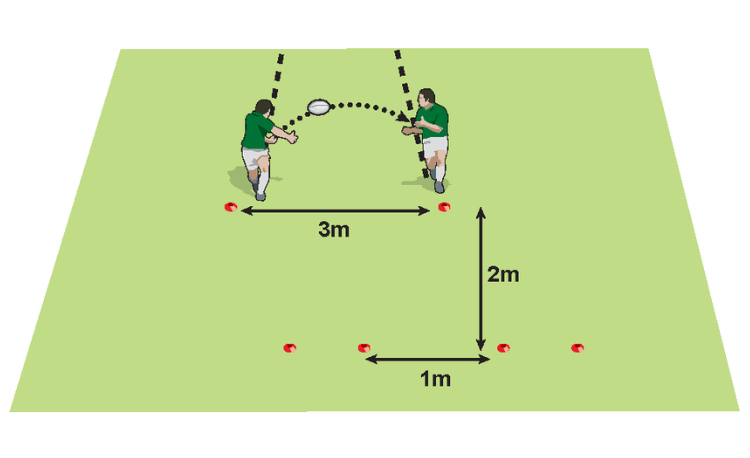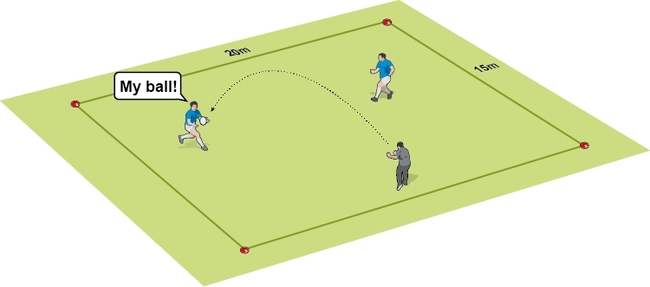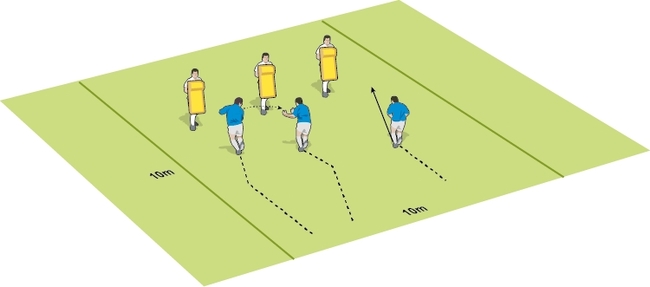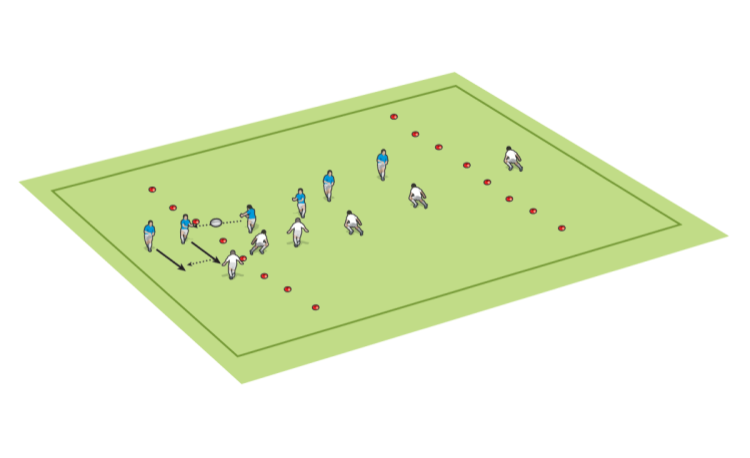Embracing the challenge, chaos and creativity of Stage C
There was a collective cheer from the coaching community on Saturday as the RFU announced a move to Stage C on the Return to Play Roadmap, this means coaches are now able to increase the capacity of coaching sessions and adopt a touch rugby format.

Perhaps aptly named, Stage C as the letter C has been a huge part of 2020 already… the challenging and chaotic Covid-19 pandemic has left many coaches scratching their heads, searching for ideas in an uncertain time for rugby. However, where there is chaos there is opportunity and maybe the next few months provides a crucial platform to connect, challenge and create decision making rich environments for our players through games-based approaches to learning?
MORE THAN ONE WHY
The RFU has launched a version of ‘two-touch’ rugby termed Ready4Rugby
The attacking team has four attempts to get into the Attack Zone. If these attempts are successful the attacking team is then rewarded with another four attempts to score.
On the first touch, players are allowed to run, pass or offload the ball to a team-mate, and on the second touch (), players must stop, throw the ball in the air to themselves before passing to a team-mate. They can also low kick in the ball in the Attack Zone.
These 10-minute games are a maximum of 10 v 10, with rolling substitutions. For the full rules on what constitutes an attempt, go to the bottom of this post.
However, providing you adhere to the guidelines of no contact, the game can be tweaked to meet a range of session intentions. For me the positives for adopting this games-based approach (GBA) to learning our endless. Players are now able to be involved with training sessions that look and feel more like the game, but GBA’s offer more than that.
GAME-BASED ENVIRONMENTS
Alongside the development of the key skills and movements used to in rugby (pass, catch, kick, evasion skills), GBA’s can help create environments that are deeply rich in game-like chaos, decision-making situations, problems to be solved and opportunities for player empowerment (Light, Harvey & Mouchet, 2014; Croad & Vinson, 2018).

Photo: Andy Watts Media
Using rugby’s principles of play such as go forward, support, continuity to create pressure coaches are able to design a more realistic learning environment that can help players explore ways to bring these principles to life and enhance their understanding. Coaches are able to create games that provide far more opportunities for players to get touches on the ball, therefore meaning more opportunities to develop skills, movements, make decisions, try things and quite importantly… make mistakes.
We have no way of knowing when the 15-a-side, contact version of the game may return, so it is important we create engaging and positive learning environments to ensure participation remains high in our game. GBAs can support this.
INTENTION IS EVERYTHING
Before designing your game, there is an important question to ask yourself… what are you trying to achieve? This forms the important intention of your game.
For instance, we may think the above Ready4Rugby helps develop our players offloading skills, however by telling players they must offload after first touch and pass on the second could do quite the opposite. By telling players when to offload we are taking away perhaps the most important part of any skill, the decision making based on the cues and clues we see as players.
These cues and clues could be a space as you get behind the defence, off-balance defenders or your ability to get your hands free. So, if developing the decision-making around the offload is Ready4Rugbys intention then it is missing some key aspects.
However, the intention of Ready4Rugby is to play a fast game that gives players lots of touches of the ball and explore principles of play, which it does well. It is our job as coaches to be environment architects and part of that is creating intentional games that help players understand the cues and clues they will find in the game itself.
For example, if our intention is to encourage our teams to move the ball to the wide channels, try to avoid rules that remove the decision-making process from the game. That rule could be: you can only score in the wide zones. What if there is a gap in the middle? Should they not go through that hole to score? Instead, let’s create a picture or rule that encourages wide play. Two of my favourite ways to constrain for this intention are;
- Sneaky conversations: asking the defence to defend really narrow and leave the wide zones unmanned or only putting one defender in the wide zone. If I really want to allow players to explore and make decisions based on the ‘cues’ and ‘clues’ they see I would only tell the defence. The picture the attack is looking at would contain lots of space or opportunity out wide.
- Points systems: We should definitively be rewarding tries through the middle, or tries scored on any part of the field, however, to emphasise the session intention it could be that we award double points for a try out wide. Triple points for a try in the wide zones by a forward and so on.
Both of these methods can work both sides of the ball. If my intention was around creating pressure in defence it may be that the team gets 5 points every time they prevent the attack from getting in the attack zone or every time they stop a set of 8 touches they get an extra player (start at 6v6 and cap it at 10). That way the defence also experience a dominant defence and start to see how creating pressure can cause issues for the attack.

Photo: Andy Watts Media
My advice here based on both research and experience: Intention is key. It doesn’t have to be just skill (that is, a point for every successful spin pass), it can be tactical (play wide), it can be about problem-solving (you are 3 scores down, 2 minutes to go)or perhaps it can be fitness based (drop off touch).
Just ensure the game design allows athletes realistic opportunity to work towards these intentions. DO NOT include rules or constraints that force players to do it. DO include rules or constraints that encourage to make those decisions naturally based on the pictures they see (Renshaw, Davids, Newcombe & Roberts, 2019.
MAKING IT A GAME FOR ALL PLAYERS
Rugby is discussed universally as the game for all shapes and sizes. However, at some point, the game has moved to a more role-driven approach to player. ‘Props don’t kick’, ‘Fly halves do not like to tackle’, ‘Backs score the tries’ became the social norm.
This prolonged break and need for adaptability is perhaps the reset button the game needs. Design your game to encourage all players to develop all skills and be able to make decisions on and off the ball.
Try rewarding the team with extra points if a try is scored from a kick from a player with a low number (1-8 on his back). The game of the future will need highly-skilled, creative players that are able to think and adapt.
GBAs can also be chaotic and with one coach on the whistle it could be that attention quickly turns to the ball and who carries it. Try to include conditions in your game design that ensure all players are included. For example, coaches might give secret missions to certain players to get 5 actions off the ball for an extra point. Mix up where the ball starts, challenge those players stood on the wing to come infield and reward them when they score under the sticks.
As coaches using GBAs not only do we have a responsibility to create a learning experience, but we have a responsibility to create a positive individual experience that ensures people come back again next week.
References
Light, R. L., Harvey, S., & Mouchet, A. (2014). Improving ‘at-action’ decision-making in team sports through a holistic coaching approach. Sport, Education and Society, 19(3), 258-275.
Croad, A., & Vinson, D. (2018). Investigating games-centred pedagogies to enhance athlete decision making in elite coaching contexts. International Journal of Coaching Science, 12(1), 35-68.
Renshaw, I., Davids, K., Newcombe, D., & Roberts, W. (2019). The constraints-led approach: Principles for sports coaching and practice design. Routledge.
RULES FOR READY4RUGBY
Set up a pitch, say 70m long, 50m wide. Mark out an attack zone in front of each try line. This can be varied, but for the younger players, it is up to the halfway line. For the most experienced, go with 10-15m. You could also vary this attack zone for different teams or at different stages of the match.
- You score one point for a try.
- Start with a pass on the halfway line, with the defence 5m back.
- The attacking team has four attempts to get into the attack zone, and then four attempts to score.
- A touch is made below the waist with one or two hands.
- After the FIRST touch, the ball carrier can run, pass or kick. They are only allowed to kick, below head height, in the attacking zone. They cannot score, but can pass to a supporting player to score.
- On the second and third touch, the ball carrier stops, throws the ball to themselves and then passes. This pass cannot be more than 2m. The defending team must retire 2m at this time.
- Once in the attack zone, the attacking team have another four attempts in which to score.
- Failure to score leads to a turnover of possession, as well as any normal attacking infringement.
For more details, visit the Ready4Rugby site.
Newsletter Sign Up
Coaches Testimonials

Gerald Kearney, Downtown Las Vegas Soccer Club

Paul Butler, Florida, USA

Rick Shields, Springboro, USA

Tony Green, Pierrefonds Titans, Quebec, Canada
Subscribe Today
Be a more effective, more successful rugby coach
In a recent survey 89% of subscribers said Rugby Coach Weekly makes them more confident, 91% said Rugby Coach Weekly makes them a more effective coach and 93% said Rugby Coach Weekly makes them more inspired.
Get Weekly Inspiration
All the latest techniques and approaches
Rugby Coach Weekly offers proven and easy to use rugby drills, coaching sessions, practice plans, small-sided games, warm-ups, training tips and advice.
We've been at the cutting edge of rugby coaching since we launched in 2005, creating resources for the grassroots youth coach, following best practice from around the world and insights from the professional game.

